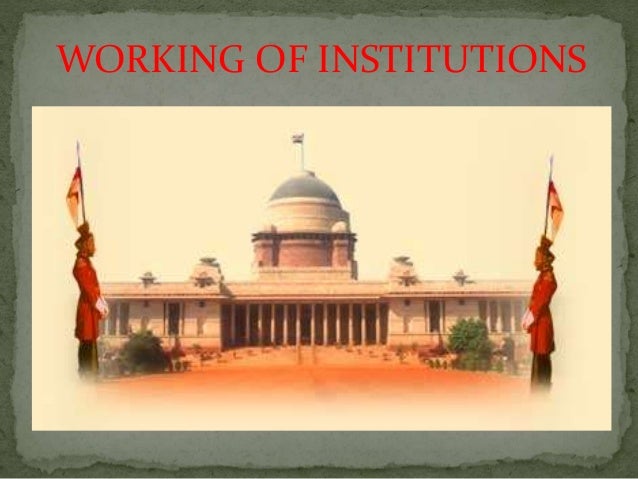Working Of Institutions Notes
A major policy decision is taken through a government order.
What is Government Order?
Issuing of Government Order A government order is a written direction on an issue signed by a government authority (office). e.g. On 13th August, 1990 the Government of India issued an order. It was called an Office Memorandum. It had a specific number. It was signed by the Joint Secretary, who is an officer in the Department of Personal and Training in the Ministry of Personal, Public Grievances and Pensions.
Decision Announced by an Order The order announced a major policy decision. According to the order, 27% of the vacancies in civil posts and services of government were reserved for SEBC (Socially and Educationally Backward Classes). Earlier benefit of job reservation was available to Scheduled Castes (SCs) and Scheduled Tribes (STs). Now the third category SEBC was also eligible for quota of 27%.
Controversy Over the Order The issuing order led to the country wide protest. Some of the protests were violent- As a result, the issue became the most debated in the media with different views and opinions. The people reacted strongly because this decision affected thousands of job opportunities.
Appeal to Stop Implementation of Order Some person and associations filed a number of cases in courts against the order. They appealed to declare the order invalid and stop its implementation. This case came to be known as the Indira Sawhney and Others vs Union of India Case.
Who are the decision makers?
President He is the head of the state and is the highest formal authority in the country.Prime Minister He is the head of the government and actually exercises all governmental powers. He takes most of the decisions in the Cabinet meetings.Parliament It consists of the President and two houses—Lok Sabha and Rajya Sabha. The Lok Sabha or the Lower House is composed of the elected representatives of the people. The Rajya Sabha or Upper House represents the interests of the States and Union Territories. The Prime Minister must have the support of a majority of Lok Sabha members.
The Parliament
Decisions are not directly taken in Parliament. But Parliamentary discussions on the Report influence and shape the decision of the government. These discussions bring pressure on the government to act. If Parliament is not in favour of the decision, then the Government can not go ahead and can not implement the decision.
The two houses of parliament
Rajya Sabha
Lok Sabha
Prime Minister and Council of Ministers
There is no direct election to the post of the Prime Minister. The President appoints the
Prime Minister.
- The President appoints the leader of the majority party or the coalition of parties that commands a majority in the Lok Sabha, as Prime Minister.
- In case no single party or alliance gets a majority, the President appoints the person most likely to secure majority
Download the full notes pdf by clicking the link below



0 Comments